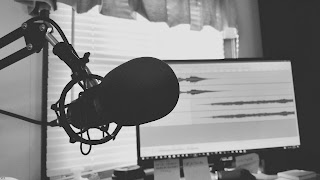It's not exactly a secret that Spotify has designs on dominating the podcasting space. After years of incremental gains in the low-margin, ultra-competitive streaming music industry, Spotify has branched out into podcasting, where the margins are larger and the potential for revenue growth is greater.
Spotify has taken incoming missiles of criticism for its foray into podcasting. If it's not the "big guy pushes out the little guys" attack, it's the "global domination, Bond Villain" accusation that muddies Spotify's image.
But give credit where credit is due. Sure, Spotify has experienced some stumbles during its podcasting growth cycle, but it has also scored some impressive wins.
It acquired several podcast businesses such as Gimlet Media, the New York-based producer, and Megaphone, a Reston, Va., business that provides ad-linking tools for audio programs.
In the last year, Spotify has flooded the market with over 100 new podcasts. Some, like Spotify: Mic Check are good. Others are not.
But Spotify is committed fully to its podcasting investment.
The most tangible evidence of that commitment is the grand opening of Spotify's "Pod City in Los Angeles in December.
Pod City, the centerpiece of Spotify’s sprawling new campus, is located in the Arts District in downtown Los Angeles.
The campus — which can accommodate as many as 600 employees — encompasses 18 podcast studios, a theater, an indoor stage and places for musicians to tinker with vintage instruments, including a piano once used by singer-songwriter Norah Jones.
Beyond centralizing its podcasting business in one place, the new Los Angeles operation allows Spotify to reduce the costs of paying outside vendors, attract and nurture new talent, and produce more original shows that it can own and distribute.
“Spotify built itself as a company that creates a solution for people to stream music from the start, and they’re beholden to doing deals with all the major labels and paying out streaming royalties, but the issue for them has always been they never owned any of it,” said Travis Dunlap, a digital media agent with WME in a LA Times interview. “They saw a massive opportunity with podcasting and that they can start funding this content and be engaged with the partner on it and having an ownership stake in the actual content itself.”
Shows recorded in Pod City include “The Bridge: 50 Years of Hip Hop”; “Higher Learning With Van Lathan and Rachel Lindsay,” where the hosts discuss Black culture, politics and sports; and “Nosy Neighbors,” hosted by comedians Candice Thompson and Chinedu Unaka.
Today, Spotify has an estimated 28.2 million monthly U.S. podcast listeners and is estimated to surpass Apple Podcasts by year’s end, according to research firm eMarketer.
Pod City includes colorful listening rooms, including one where Spotify’s music team can meet with artists to discuss their latest songs while lounging on velvet couches set against round windows.
There is also a building focused around live events and music. It opens to an indoor stage, with space for an audience of up to 600 people on the lower floor and a VIP space on an upper floor. There are music recording studios, an echo chamber and a trove of vintage musical instruments including a 1935 Rickenbacker guitar for artists to tinker with.
While no monetary figure was released about the cost of building Pod City, the stdio complex is incontrovertible evidence that Spotify is here to stay in the podcasting industry.

Comments
Post a Comment
Thank You for your input and feedback. If you requested a response, we will do so as soon as possible.